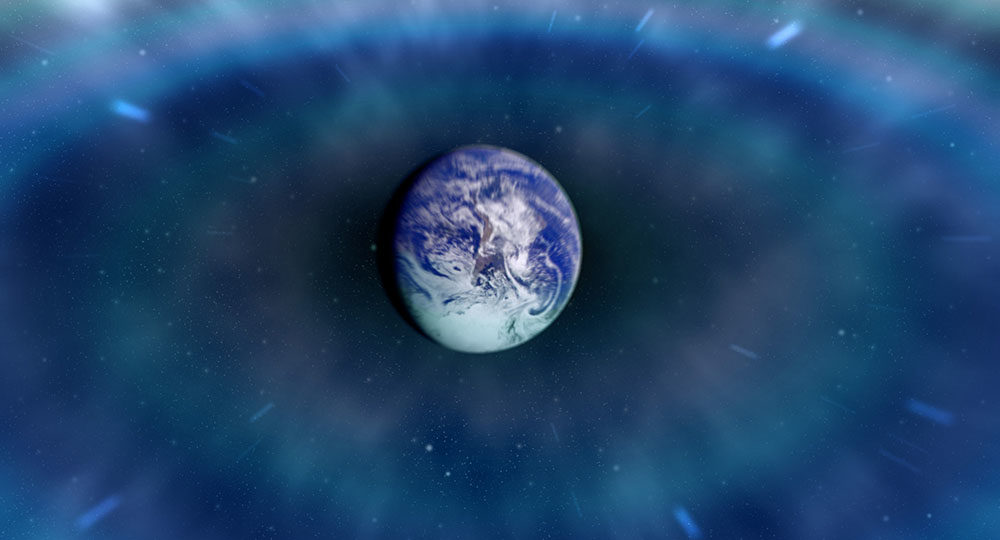The Biblical Concept of the Day of the Lord
The Significance of the Day of the Lord
In the Scriptures, the expression the Day of the Lord (together with other synonymous expressions, such as that day and the day of God) is strongly related to God’s rule of the earth and therefore to His sovereign purpose for world history and specific events within that history. The Day of the Lord refers to God’s special interventions into the course of world events to judge His enemies, accomplish His purpose for history, and thereby demonstrate who He is—the sovereign God of the universe (Isa. 2:10–22; Ezek. 13:5, 9, 14, 22–23; 30:3, 8, 19, 25–26).
Evidence for this significance of the Day of the Lord is found in references in the Scriptures to past Days of the Lord. The Bible indicates that there, have been several past Days of the Lord in which God exercised and demonstrated His sovereign judgment OR other nations. He raised up Assyria to judge the northern kingdom of Israel during the 700s B.C. (Amos 5:18, 20), Babylon to judge the southern kingdom of Judah during the 600s and 500s B.C. (Lam. 1:12; 2:1, 21–22; Ezek. 7:19; 13:5; Zeph. 1:7–13; 2:2–3); Babylon to judge Egypt and its allies during the 500s B.C. (Jer. 46:10; Ezek. 30:3), and Medo-Persia to judge Babylon during the 500s B.C. (Isa. 13:6, 9).
The Day of the Lord and Human Instruments
In these past Days of the Lord, God used human instruments and human activity through war to execute His sovereign purpose against His enemies. The Scriptures thereby indicate that God’s Day of the Lord interventions into the course of world events sometimes involve human instruments and activity, not just His direct, miraculous works.
The Day of the Lord in the Future
The Scriptures indicate that the concept of the Day of the Lord is applicable not only to past interventions of God into history, but also to the future. First, Isaiah 2:10–22 describes a Day of the Lord that will involve the sixth seal described by the Apostle John in Revelation 6:12–17. This sixth seal will take place during the future 70th week of Daniel 9; therefore, the Day of the Lord that will involve that seal must also take place during that future time period.
Second, Isaiah 34:1–8 and Obadiah 15 describe a Day of the Lord when God will judge all the nations, or Gentiles, of the world. None of the past Days of the Lord referred to earlier involved divine judgment of all the nations. Up to this point in history, there has not been such a judgment of all nations during the same time period. It can therefore be concluded that the Day of the Lord of Isaiah 34 and Obadiah must be future.
Third, Joel 3:1–16 and Zechariah 14:1–3, 12–15 refer to a Day of the Lord that will involve God’s judgment of the armies of all the nations of the world, when those armies are gathered in Israel to wage war against that nation and the city of Jerusalem and when the Messiah will come to war against them. According to Revelation 16:12–16, those armies will not begin to gather until the sixth vial or bowl is poured out during the 70th week of Daniel 9. In addition, Revelation 19:11–21 indicates that Christ will wage war against them when He comes from Heaven in His glorious Second Coming. This forces the conclusion that the Day of the Lord of Joel 3 and Zechariah 14 is future.
Fourth, in 1 Thessalonians 5:1–11 the Apostle Paul referred to a Day of the Lord that was future at the time he wrote his epistle and that would bring sudden, inescapable destruction on the unsaved of the world. This Day of the Lord did not take place before Paul wrote his Thessalonian epistle, and it seems evident that nothing of its nature has occurred since; so the Day of the Lord of 1 Thessalonians 5 is future.
The Twofold Nature of the Day of the Lord In the Future
The Scriptures indicate that the Day of the Lord in the future will be twofold in nature. First, it will be characterized by darkness and a tremendous outpouring of divine wrath on the world Joel 2:1–2; Amos 5:18–20; Zeph. 1:14–15; 1 Th. 5:1–11). Amos 5:18–20 emphasizes that this will be the total nature of the Day of the Lord for God’s enemies. That day will bring no divine light or blessing to them. This will be the nature of the Day of the Lord during the 70th week of Daniel 9.
Second, the Day of the Lord will also be characterized by light, an outpouring of divine blessing, and the administration of God’s rule. The Prophet Joel, after talking about the darkening of the sun, moon, and stars and God’s future Day of the Lord judgment of the armies of the nations that have gathered in Israel (3:9–16), then foretold great divine blessing “in that day” (vv. 17–21). In addition, the Prophet Zechariah discussed the future Day of the Lord when all nations will wage war against Jerusalem and the Messiah will come to earth to fight against the nations (14:1–5). Zechariah indicated that, although the earlier part of “that day” will be characterized by darkness, the latter part will be characterized by light (vv. 6–7), great blessing (v. 8), and God’s rule over all the earth (v. 9). This time of light, divine blessing, and God’s rule will be the nature of the Day of the Lord during the Millennium.
This twofold nature of the Day of the Lord in the future has been recognized by numerous scholars. For example, Davidson wrote, “Hence the ‘day of the Lord’ acquires a double-sided character. It is a day of salvation and judgment, or a day of salvation through judgment … a day of salvation behind this. Sometimes one side is prominent and sometimes another … Sometimes both sides of the Divine manifestation are brought forward, as in Joel.”* Payne stated that the Day of the Lord involves a twofold pattern of judgment and restoration.*
Thus, the Day of the Lord in the future will be twofold in nature. Just as each day of creation and the Jewish day consisted of two phases—a time of darkness (“evening”) followed by a time of light (“day,” Gen. 1:4–5)—so the future Day of the Lord will consist of two phases—a period of darkness (judgment) followed by a period of light (divine rule and blessing).
Since, as noted earlier, the Day of the Lord will demonstrate who God is, it would seem strange for the God who is light and in whom there is no darkness at all (1 Jn. 1:5) to have His day consist totally of darkness with no period of light, especially since the present day of Satan and rebellious man is characterized by a rule of darkness (Eph. 6:12; Col. 1:13).
In addition, since, as shall be seen later, the present day of Satan and rebellious man involves their rule of the world system, the future Day of the Lord would not truly be His day if it did not involve His rule of the world system during the Millennium. How could the future Day of the Lord fully demonstrate who He is—the sovereign God of the universe—without the sovereign exercise of His rule in visible form over the entire world?
The Background of the Day of the Lord in the Future
Why has the expression Day of the Lord been used for God’s divine interventions into the course of world events to judge His enemies, accomplish His purpose for world history, and thereby demonstrate who He is—the sovereign God of the universe? Some background is necessary to understand the reason.
After God created man, He gave him dominion over everything on planet Earth (Gen. 1:26, 28; Ps. 8:3–9). This indicates that God intended man to serve as His representative, administering God’s rule over the earthly province of His universal domain. In other words, God designed the government of the earth to be a theocracy, a form of government in which God is the sovereign ruler of the earth, but His rule is administered through an Adam, a human representative.
When God’s enemy, Satan, convinced the first Adam to rebel against God and His rule, God’s theocratic kingdom rule over the world system was lost (Gen. 3). Through Adam’s rebellion, Satan usurped the rule of the world system away from God (Lk. 4:5–6; Jn. 14:30; 1 Jn. 5:19). Since that time, Satan and rebellious man have been dominating the world system according to their own thoughts and ways (Isa. 55:7–9). In other words, Satan and man have been having their day in the world. During their day, they try to establish and assert their own sovereignty and deity.
In light of what has happened, God’s purpose for world history is to glorify Himself by demonstrating that He alone is the sovereign God. In order to accomplish this purpose, God has determined to have His day in the world in the end times of world history (Isa. 2:10–22).
Several times in the past, God broke into the day of Satan and rebellious man with the interventions, or Days of the Lord, that were noted earlier. He did this for several reasons: to accomplish an immediate divine purpose (namely, the disruption, frustration, or destruction of some plan, purpose, or accomplishment of Satan and man), to graphically remind Satan and man that God is still the ultimate sovereign over the earth and universe, and to give Satan and man a foretaste or forewarning of the ultimate Day of the Lord that will come at the end of world history.
The future Day of the Lord determined by God will be far more significant than those days of the past. It will have at least two phases. The first phase will be a period of unprecedented, concentrated judgment involving the 70th week of Daniel 9 and the Second Coming of Christ. In this phase, God, who throughout most of history has permitted Satan and rebellious man to have their day, will suddenly intervene to destroy the rule of Satan and man over the world system, to evict them from the earth, and thereby to end their day in the world (Isa. 42:13–14; Rev. 6–19). This phase will be characterized by darkness and an intense outpouring of God’s wrath.
The second phase will be a period of divine dominion over the world system. In this phase, God will intervene to restore and exercise His theocratic kingdom rule over the world through the last Adam, Jesus Christ (Zech. 14:1–9; 1 Cor. 15:45, 47; Rev. 20:1–6). This phase will be characterized by light and an outpouring of God’s blessing.
The next article in this series will examine other aspects of the future Day of the Lord.








